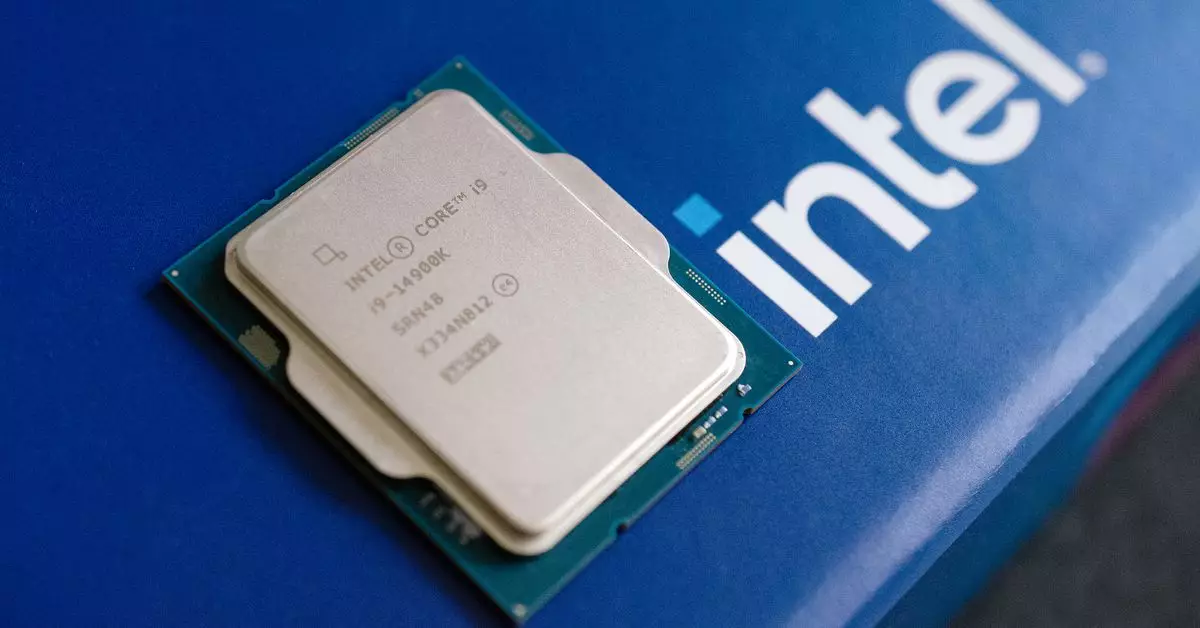In the fast-paced world of technology, updates and fixes become essential as manufacturers strive for reliability and performance. Recently, Intel, a leading force in the semiconductor industry, announced a critical microcode update aimed at addressing significant issues with its 13th and 14th Generation Raptor Lake processors. Known for their impressive performance capabilities, these chips have raised concerns following evidence that some units could suffer permanent damage, manifesting as crashes during usage.
Analyzing the source of these issues, it appears that the primary concern lies in how the processors manage power consumption when idling or engaging in low-load tasks. Intel’s solution, the microcode update designated as 0x12B, seeks to mitigate damage by keeping voltage demands in check. Excessive power draw during inactive states can lead to the premature aging of chips, threatening the longevity and reliability of these high-performance components.
Addressing the Problematic Chips
Despite this proactive measure, the current fix does not extend to chips already compromised and crashing. Intel has geared its efforts towards preventing future incidents rather than rehabilitating affected devices. For users experiencing instability, the advice is clear: pursuing a BIOS update may not be fruitful. Instead, Intel recommends reaching out to the original manufacturers or retailers to initiate a return under the extended warranty protections instituted due to these vulnerabilities.
The situation unveils broader questions about quantitative assessments. While Intel has not disclosed the number of affected processors, the ambiguity casts a shadow over consumer trust. Many technology enthusiasts rely on transparency, especially when significant investments hinge on product reliability. The absence of clarity about affected units undoubtedly causes anxiety among users, leading them to question the integrity of their hardware.
Microcode Updates and User Experience
Intel’s approach has engendered mixed reactions among users. For those possessing undamaged systems, the anticipation of BIOS updates introduces a glimmer of hope. However, the understanding that validation processes could stretch over weeks fluctuates optimism with frustration. Tech aficionados are keen to see rapid implementations, as the window of vulnerability seems uncomfortably wide.
Earlier BIOS updates included preventive measures in anticipation of this power voltage issue, yet the urgency remains for users to implement those updates promptly. This situation has placed consumers in a precarious position, needing to navigate a balance between trusting in Intel’s capabilities and taking preemptive actions on their end.
In an age where dependency on efficient technology monopolizes everyday tasks, the implications of these vulnerabilities can ripple across anyone relying on Raptor Lake processors. As Intel attempts to navigate these choppy waters filled with both scrutiny and doubt, its communication strategies regarding defect reports and product vulnerabilities must evolve.
Ensuring both hardware and user confidence is paramount. As the tech community awaits more decisive answers from Intel, consumers must stay vigilant, informed, and proactive to protect their investments in an environment where chip reliability is called into question. The stakes are high in the world of technology, and trust takes painstaking effort to rebuild.


Leave a Reply